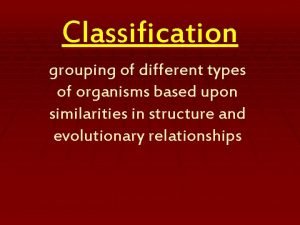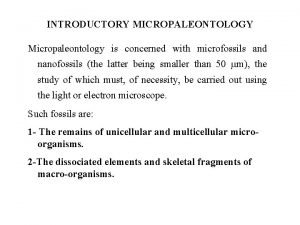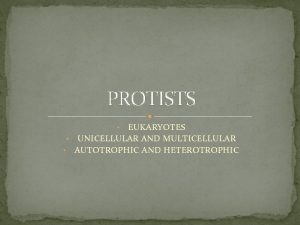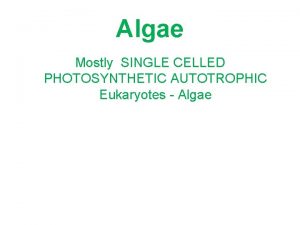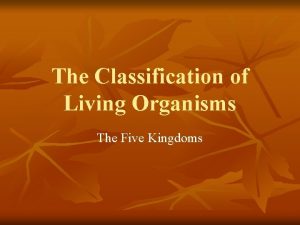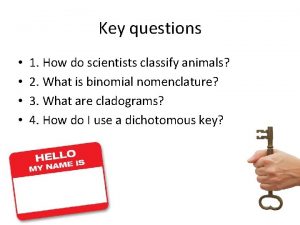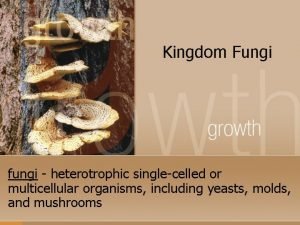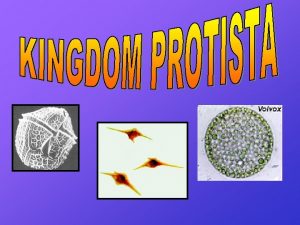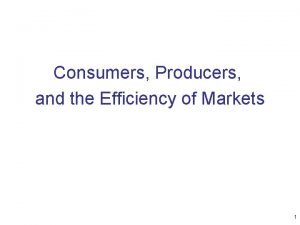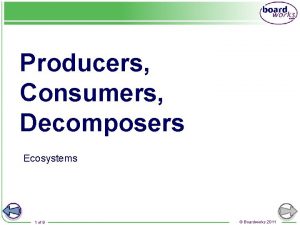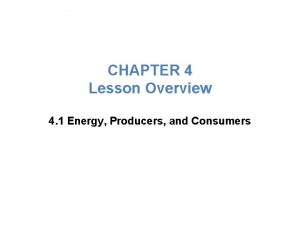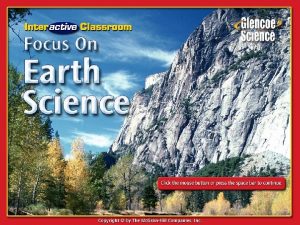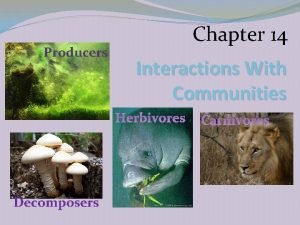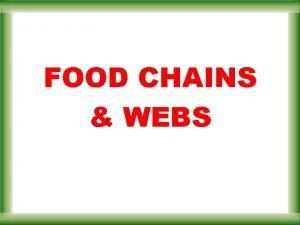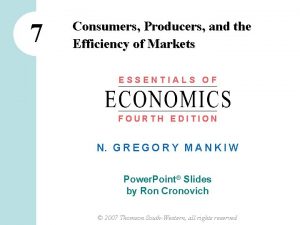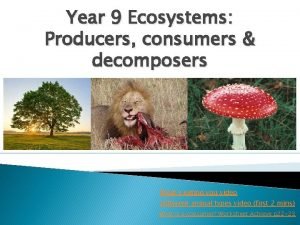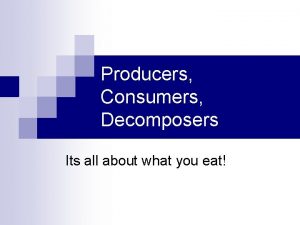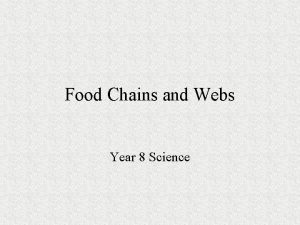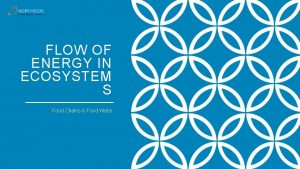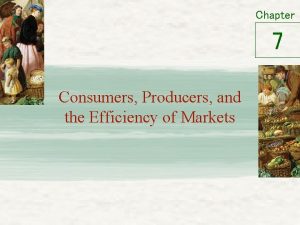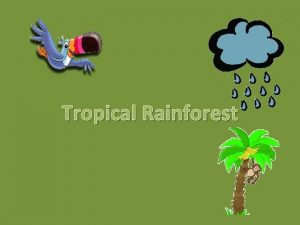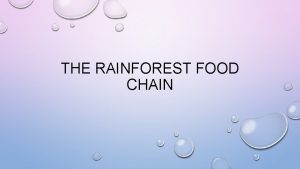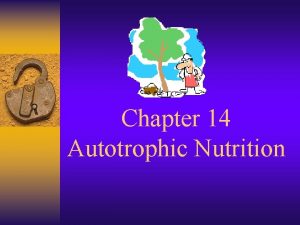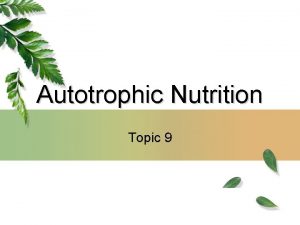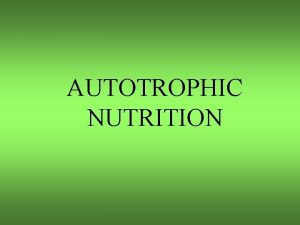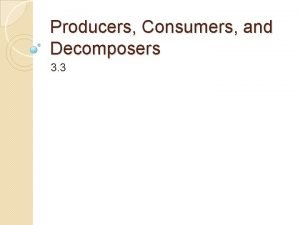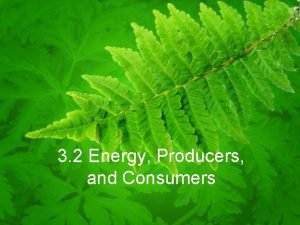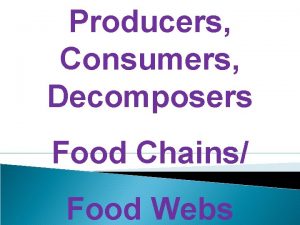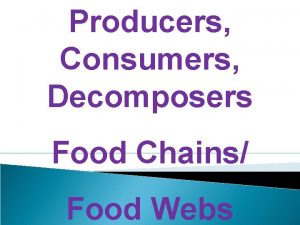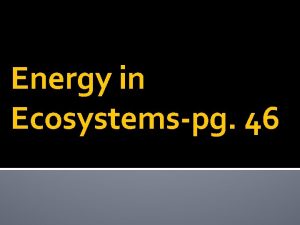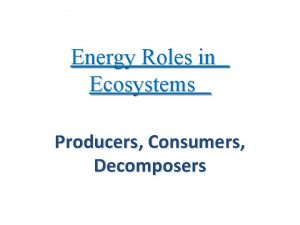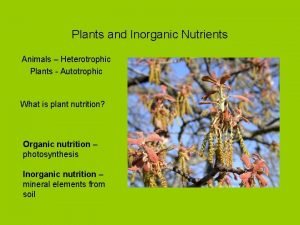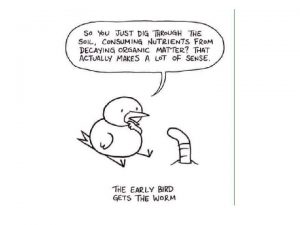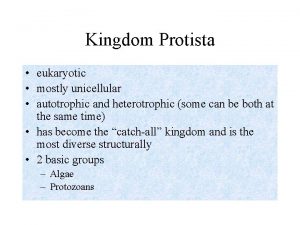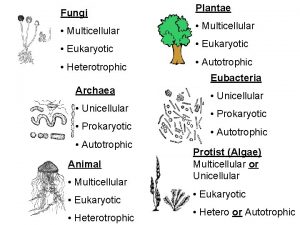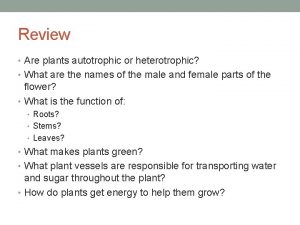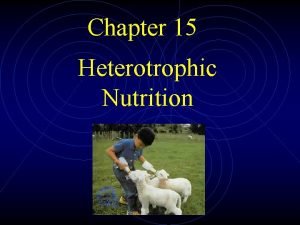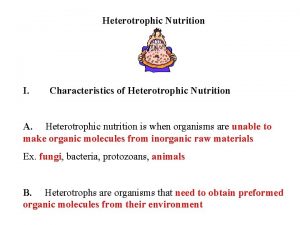consumers heterotrophic DNA No organelles 1 producers autotrophic




![BSE [mad cow disease] Foot and mouth v. CJD HIV bacteria Altered proteins herpes BSE [mad cow disease] Foot and mouth v. CJD HIV bacteria Altered proteins herpes](https://slidetodoc.com/presentation_image_h2/92559ab063dea12b47fe6e66a3f27eab/image-5.jpg)









![Blood 5 L Solid [Cells] Liquid [Plasma] Transport RED WHITE PLATELETS Oxygen Defence Clotting Blood 5 L Solid [Cells] Liquid [Plasma] Transport RED WHITE PLATELETS Oxygen Defence Clotting](https://slidetodoc.com/presentation_image_h2/92559ab063dea12b47fe6e66a3f27eab/image-15.jpg)














- Slides: 29

consumers heterotrophic DNA No organelles 1 producers autotrophic 2 MONERA PROTISTA Single cell PROKARYOTA NO NUCLEUS A Amoeba Proctoctista Simple organisation Unicellular RNA or DNA + protein coat Alive ? Viruses No cell no cytoplasm no organelles Living Organisms KINGDOMS B 5 Have a NUCLEUS Eukaryote Multicellular Obligate parasites FUNGI 3 heterotroph ANIMALS 5 PLANTS 4 heterotroph autotroph hypha photosynthesis differentiation Wall--cellulose organs mycelium Wall--chitin Yeast mushrooms, m oulds Gametophyte & sporophyte Nervous system No cell wall non-vascular mosses vascular ferns gymnosperms angiosperms Conifers Algae Flowering plants

Bacteria in pea roots Bacteria in intestines Fungal mycorrhiza dead symbiosis saprophyte alive parasite photosynthetic heterotrophic consumer chemosynthetic Food spoilage autotrophic producer pathogen disease Harmful Nutrition antibiotics Economic Importance Food preservation Microorganisms Decay, recycling C, N, P Beneficial Canning drying salting pickling smoking chilling freezing cooking pasteurising irradiating Genetic engineering enzymes cheese, alcohol Growth Agar heat p. H *Food processing factors toxins *Growth curve Bioprocessing food supply continuous flow Remove products yoghurts batch flow Empty / refill antibiotics lag log stationary death survival Precautions Preparation Sterilisation Pouring plates Inoculation Incubation

in intestines nodules in pea roots Mutual benefit Mucopolysaccharide wall Decay, recycling C, N, P symbiosis photosynthetic No organelles chemosynthetic saprophyte plasmid parasite Circular DNA *prokaryote host harm consumer producer Food spoilage No nucleus Nutrition Single cell disease rod round pathogen BACTERIA shapes Harmful vaccines Economic Importance spiral antibiotics Reproduction Beneficial sexual conjugation asexual endospore Resistant phase Binary fission clones mutation Antibiotic resistance recycling Genetic engineering symbiosis cheese, yoghurt N-fixing Vitamin K

Food spoilage roots mychorrhiza rhizoid Extracellular enzymes Decay, recycling C, N, P lichen saprophyte symbiosis parasite chitin mycelium wind athlete’s foot wall hypha spores disease moulds Nutrition Rhizopus sporangium Food spoilage heterotrophic asexual Harmful FUNGI reproduction dry rot crops Potato blight Economic Importance sexual eukaryotic* gametangia Beneficial nucleus recycling C, N, P zygospore food mushrooms Nutrient agar antibiotics Growth autoclave ACTIVITY sterilisation Yeast Agar plates bread petri dish inoculation Leaf Yeast control mitosis Ash tree incubation culture colonies alcohol reproduction Pink colonies Pollution indicator budding chain of cells structure Single cell vacuole
![BSE mad cow disease Foot and mouth v CJD HIV bacteria Altered proteins herpes BSE [mad cow disease] Foot and mouth v. CJD HIV bacteria Altered proteins herpes](https://slidetodoc.com/presentation_image_h2/92559ab063dea12b47fe6e66a3f27eab/image-5.jpg)
BSE [mad cow disease] Foot and mouth v. CJD HIV bacteria Altered proteins herpes polio warts chickenpox measles prions Mosaic diseases Animal virus bacteriophage Plant virus No cell parts Alive ? Obligate parasite Crop damage Animal infection diseases Medical costs Nutrition Economic importance Body fluids Quality of life VIRUSES animals insects Vectors [carriers] death structure Air droplets Replication In host cell . 020 -. 3 um DNA RNA + Takes over Protein antibodies vaccination Dead virus White cells Mild strain New virus particles

Mud in ponds O 2 in No shape animal enzymes respiration Single cell Food vacuole diffusion CO 2 out feeding excretion AMOEBA pseudopodia osmoregulation movement Water in by osmosis reproduction Binary fission mitosis responsiveness chemicals light food Contractile vacuole

perennial many years—seeds / perennating organ crocus, daffodil biennial 2 year—food store / flower, seed carrot, cabbage annual 1 year—seed, flower, seed corn, pea herbaceous LIFE CYCLES deciduous Lose leaves oak, ash woody evergreen perennial holly, spruce

1 cotyledon endosperm monocotyledonous Fibrous roots Flower parts in 3 s Parallel leaf veins grasses [e. g. wheat, corn, barley], sugarcane, Palm trees, lilies, orchids, bamboo, Vascular bundles scattered in stem FLOWERING PLANTS Pollen grain— 1 furrow 2 cotyledons dicotyledonous No endosperm Tap roots Flower parts in 4 s or 5 s Network of leaf veins Vascular bundles in rings in stem Pollen grain— 3 furrows Most trees and shrubs [apart from conifers] sycamore, oak, rose, cactus, pea, bean, lettuce,

cuticle Upper epidermis photosynthesis bark protection epidermis Ground tissue storage LEAF Ground tissue Lower epidermis transpiration support T. S. STEM stomata Vascular bundle Sexual Reproduction PLANT STRUCTURE FLOWER Vegetative Reproduction Gas exchange lenticels phloem food xylem support water BUD Stem, root, leaf, bud meristem growth TISSUES Root tip dermal protection epidermis root hairs ground storage epidermis vascular parenchyma absorption anchor storage ROOT T. S. Ground tissue support transport xylem phloem Vascular tissue phloem food xylem support water

TRANSPIRATION STREAM * AIR T r a n s l o c at i o n CO 2 photosynthesis sugar leaf phloem Ground tissue Guard cell photosynthesis stomata water Transpiration [pull] xylem CO 2 level drops K+ enter guard cells storage *cohesion Water to water *adhesion Water to xylem osmosis stem Water enters Stoma opens xylem root Root pressure [push] Ground tissue Root hair minerals Active transport water osmosis SOIL

bud apical Cambium inhibitor promoter meristem New cells elongation energy Combined effect Active transport growth Phloem and xylem PLANT GROWTH RESPONSES ACTIVITY Unidirectional stimulus TROPISM The effect of IAA growth regulator on plant tissue PHOTO light GEO gravity HYDRO CHEMO water minerals THIGMO touch Radish seeds Different concs of IAA Pollen tube -micropyle *mechanism Stems/roots light redirects Measure “dark” side grows faster bends to light *AUXIN production sites functions effects Vines, tendrils

leaves Apical dominance geotropism phototropism Stem elongation embryo enlargement meristem AUXIN Fruit development germination New growth in spring GIBBERELLIN IAA Rooting powder PLANT GROWTH REGULATORS Synthetic Herbicide Fruit ripening fruit ETHENE meristem CYTOKININ Root tips Mature leaves Abscission of leaves, flowers and fruits ABSCISIC ACID mitosis Leaf growth Fruit and seeds promotes dormancy Delays ageing Breaks dormancy

Anthers outside nectar Feathery stigma Sticky stigma Light pollen, many grains spiky pollen zygote Embryo No bright colours Bright petals fertilisation Wind pollinated seed food store Insect pollinated egg stigma pollination Sperm nucleus Pollen grain ovule fruit ovary Dormancy Protect as bud Stamen sepal carpel dispersal wind FLOWER variety water animal Sexual self dispersal Resistant stage PLANT REPRODUCTION dormancy water Many stages to go through Asexual Germination heat Activity Vegetative Reproduction oxygen food store enzymes Pyrogallic acid Activity amylase Starch agar + iodine Clear patches

ASEXUAL REPRODUCTION reliable Limited dispersal Exact copy advantages Quick growth disadvantages VEGETATIVE PROPAGATION No variety artificial rhizome root stem cuttings grafting budding runner corm tuber tap bulb PERENNATION Quick growth in spring Underground food store Survive winter Diseases affect all
![Blood 5 L Solid Cells Liquid Plasma Transport RED WHITE PLATELETS Oxygen Defence Clotting Blood 5 L Solid [Cells] Liquid [Plasma] Transport RED WHITE PLATELETS Oxygen Defence Clotting](https://slidetodoc.com/presentation_image_h2/92559ab063dea12b47fe6e66a3f27eab/image-15.jpg)
Blood 5 L Solid [Cells] Liquid [Plasma] Transport RED WHITE PLATELETS Oxygen Defence Clotting Sense organs Respiratory system physical barrier [skin], tears [eye], hairs and wax [ears], hairs and mucus [nose] cilia and mucus [lungs] Natural Digestive System Circulatory system acid [stomach] clotting [platelets], phagocytosis [white cells] Types of Immunity Active Virus or bacterium attacks body Passive Antibodies from mother through placenta or milk Naturally Acquired Active Vaccine [dead or mild dose of the disease] Passive Injected with antibody [e. g. anti-tetanus] Artificially

Exercise Body cells Lungs Activity Cardiac muscle Systemmic circulation Pulmonary circulation Pulse Pacemaker fat Double pump Atrium---IN smoking Heart attack Coronary artery Ventricle---OUT Heart Dissect Activity valves Stops backflow Circulatory System Vessels Blood Cells Liquid Red Plasma O 2 Blood Groups Transport Bone marrow Arteries Veins away O 2 pulse Valves skin thin Platelets clot Capillaries exchange White Defence Lymphatic system Lymphocytes Lacteal in villus Acquired Natural Antibodies active Disease, Vaccine Drainage Lymph nodes Immunity Skin, stomach acid, White cells, Platelets mucus, wax passive From mother--womb, milk B* T* Thymus cytotoxic Bone helper Attack infected cells immunity Plasma Memory cells Antibodies bind to free antigen vaccines

minerals water Ingestion vitamins protein Absorption fibre Balanced Diet Digestion Digestive system Assimilation fat Human Egestion carbohydrate NUTRITION Autotroph Heterotroph Producer Consumer Make own food consume others PHOTOSYNTHETIC CHEMOSYNTHETIC HOLOZOIC SAPROPHYTIC PARASITIC Green plants some Bacteria Digestive system Dead matter living host--harm HERBIVORE CARNIVORE OMNIVORE Plants only Animals only Everything rabbit, sheep cat, hedgehog badger, human

Emulsify fats Bile pigments Bile salts drugs Bile clotting toxins Red cells Prothrombin Food additives Excess amino acids BREAKS DOWN Vit K MANUFACTURES protein fibrinogen Plasma proteins transport urea hormones New cells Amino acids heat LIVER ASSIMILATES lipids From metabolism STORES Minerals[iron] Vitamins [A, D, K] store glucose glycogen respiration energy muscle liver cell membrane skin

Peptic ulcer peristalsis bolus churn OESOPHAGUS mucus pepsin Gastric juice store STOMACH HCl chyme physical SALIVARY GLANDS teeth amylase saliva MOUTH mucus speech DIGESTIVE SYSTEM taste Emulsify fats LIVER Bile salts SMALL INTESTINE DUODENUM amylase, trypsin, lipase Pancreatic juice PANCREAS faeces egestion bacteria rectum ILEUM LARGE INTESTINE colon caecum appendix Erepsin maltase, peptidase Water reabsorbed sugars, amino acids lipase fatty acids + glycerol Absorption VILLUS capillaries Lacteal [lymph]

intestines liver kidney ins ulin glu cag on ADH Nutrients Water Toxins hormones p. H blood Distribution around the body HOMEOSTASIS in Humans lymph Oxygen Invaders Nervous system skin hypothalamus Temperature blood medulla Carbon dioxide lungs

leaf Nutrients Oxygen Carbon dioxide Leaf fall transpiration photosynthesis Cell sap Toxins Stomata, lenticels Water HOMEOSTASIS in plants heartwood Xylem phloem root Distribution around the body Temperature Invaders bark Adaptation cuticle leaf Dormancy As plant Leaf fall Bud protected As seed Thick cuticle underground Thin, narrow e. g. cactus Perennating organ Sunken stomata

smoking Cars, factories inflammation pollution 79% 21% bronchitis Alveoli damage N 2 emphysema disorders Air O 2 0. 03% cancer asthma Tubes narrow CO 2 LUNGS mucus trachea cilia *hypothalamus bronchus inhaling *medulla bronchiole diaphragm alveolus Intercostal[ribs] muscles contract capillaries wet exchange

CO 2 water urea salts dialysis Lungs heat transplant *NEPHRON sweat Kidney failure Skin glomerulus filter EXCRETION Bowman’s capsule intestines Kidney Bile pigments Selectively reabsorb Liver toxins excess protein water tubules Collecting duct urea excrete urea bladder salts water If ADH present osmoregulation

Hormone actions Nerve detection or response target ductless Shorter duration Chemical messenger electricity faster blood Hormones Nervous system Cells carry message Co-ordination Negative feedback ENDOCRINE SYSTEM Homeostasis balance hypothalamus Brain pituitary Anterior Posterior Oxytocin FSH TSH Pancreas ACTH Thyroid Insulin glucagon Thyroxine Sugar levels Metabolism LH Adrenal steroids growth ADH adrenaline Fright or flight Ovary oestrogen progesterone cycle traits Testis testosterone sperm traits Birth milk Retain water [kidney]

vertebra pectoral, pelvic girdles Spinal cord spine protein skull SUPPORT strength *osteocyte PROTECTION ribs Calcium, phosphorus salts STORAGE BREATHING rickets SKELETON osteoporosis Disorders voluntary involuntary tendon arthritis cardiac muscles BLOOD CELLS Pull [contract] MOVEMENT Antagonistic pair red marrow Ends of long bones cartilage Flat bones JOINTS friction Synovial fluid ligaments immovable fixed skull synovial Partly movable pivot neck gliding wrist hinge elbow ball & socket shoulder

Sensory area Motor area Personality protection myelin conscious meninges balance co-ordination cerebellum cerebrum White matter Grey matter NEURON Pulse, breathing SPINAL CORD BRAIN medulla hypothalamus CENTRAL N. S. pituitary NERVOUS SYSTEM hormones Dorsal root ventral root Reflex action Sensitivity Co-ordination PERIPHERAL N. S. dendrite NEURON Sensory nerves motor nerves dendron 5 Senses cell body ganglion impulse Receptors axon schwann cell myelin sheath muscles, glands Effectors synaptic knobs synapse nodes neurotransmitter acetylcholine stimulus response

friction Wound heals dead urea sun hair epidermis sweat melanin Excretion salts Protection oil SKIN water nerves Temperature control hair capillaries adipose UV Sensitivity waterproof

No reflection amount pigment skull pupil choroid melanin iris “coloured” eyelids tears protection light conjunctiva rods b/w cones colours retina EYE sclera cornea far focus shape accommodation humour lens close Ciliary muscle Suspensory ligaments SENSES SKIN Semi-circular canals TONGUE pinna Balance Funnel EAR skull Hearing wax Protection hairs eardrum 3 bones Eustachian tube cochlea Ears ‘pop’ Auditory nerve NOSE

Seminal vesicle beard = store Bone, muscle prostate Seminal fluid epididymis sperm testosterone Vas deferens testis Contraception methods vasectomy semen MALE penis condom intercourse HUMAN REPRODUCTION insemination vagina FEMALE fertilisation Cut tubes ovary In oviduct Uterus [womb] zygote oviduct IUD ovulation blastocyst egg oestrogen progesterone twins implantation Pill Breasts, womb pregnancy Menstrual cycle embryo egg Corpus luteum follicle foetus Nutrients, waste *LH *pituitary afterbirth Amniotic fluid protection Umbilical cord labour *FSH placenta
 Producer primary consumer secondary consumer
Producer primary consumer secondary consumer Primary producers
Primary producers Is euglena autotrophic or heterotrophic
Is euglena autotrophic or heterotrophic Is a foraminifera heterotrophic or autotrophic
Is a foraminifera heterotrophic or autotrophic Multicellular heterotrophic
Multicellular heterotrophic Algae autotrophic
Algae autotrophic 5 kingdoms
5 kingdoms Protists unicellular or multicellular
Protists unicellular or multicellular Are rotifers autotrophic or heterotrophic
Are rotifers autotrophic or heterotrophic Multicellular fungi examples
Multicellular fungi examples Ascomycotes
Ascomycotes Slime mold heterotrophic or autotrophic
Slime mold heterotrophic or autotrophic Consumers, producers, and the efficiency of markets
Consumers, producers, and the efficiency of markets Two producers in the food web
Two producers in the food web Energy producers and consumers lesson 1
Energy producers and consumers lesson 1 Tertiary food web
Tertiary food web Producers respond to consumers' positive economic votes by
Producers respond to consumers' positive economic votes by Energy producers and consumers lesson 1
Energy producers and consumers lesson 1 Producer decomposer consumer
Producer decomposer consumer Moray eel and cleaner shrimp symbiotic relationship
Moray eel and cleaner shrimp symbiotic relationship Where are decomposers in the food chain
Where are decomposers in the food chain Mono lake food web answers fossweb
Mono lake food web answers fossweb Consumers producers and the efficiency of markets
Consumers producers and the efficiency of markets Producers consumers and decomposers worksheet
Producers consumers and decomposers worksheet Consumers producers and decomposers
Consumers producers and decomposers Producers consumers and decomposers
Producers consumers and decomposers Decomposers on a food web
Decomposers on a food web Chapter 7 consumers producers and the efficiency of markets
Chapter 7 consumers producers and the efficiency of markets Rainforest ecosystem producers
Rainforest ecosystem producers Tropical rainforest animals food chain
Tropical rainforest animals food chain


